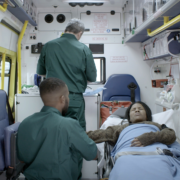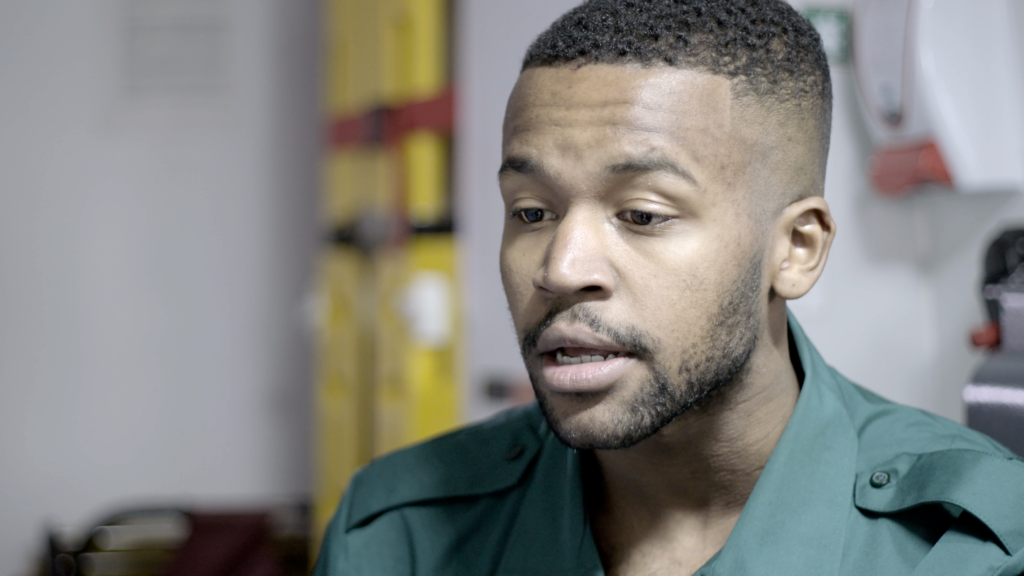First Operational Activity for MDA’s Ambulance-Bus
https://chat.whatsapp.com/AmbulanceTodayDirect
On Friday, July 3, MDA’s unique and first of its kind intensive care bus was called for the evacuation of 9 residents from a nursing home in southern Israel who were diagnosed with Corona virus.
All of the patients were evacuated by the bus in one trip to the Corona Health Care Geriatric Center located in the center of the country.
The unique bus, which was introduced about a month and a half ago, allows the evacuation of up to thirteen patients and injured, with two of them evacuated lying in the middle of the bus, which is equipped with intensive care equipment, and eleven others sitting in the back.
Sirens and an advanced communication system are installed in the bus, enabling the crews in different parts of the bus to contact MDA. The evacuation to the hospital today saved nine ambulances needed to perform such a task.
The MAN company buses are converted inner-city busses and measure just under 40 feet/ 12 meters in length, 2.5 meters wide, and 2.47 meters high.
The three parts of the bus are completely separate from each other with opaque partitions. Thus, even in the case of evacuating infectious patients, the driver does not require PPE.
In order for the driver to keep in touch with teams and evacuees at all times, there is a communication system that allows them to speak. In addition, the driver has access to cameras that are located throughout the bus.
In the middle of the bus, there are two beds with equipment suitable for ALS care. Two paramedics are appointed to treat patients who are lying in this part, while they can see through the camera what is happening in the back, where up to eleven evacuees can be transported in stable or light condition.
There is also an advanced life support equipment, which includes, among other things, defibrillators that can also perform ECGs, and automated chest compressions devices.
Above each seat in the back of the bus, there is an oxygen tap. The eleven taps are fed by four large oxygen tanks, which are connected to a special system located in the front of the bus.
There are also two refrigerators on the bus that are designed to store blood and medicines that need to be refrigerated.
In addition to all of this, the bus is powered by V230 power outlets, which allow additional medical equipment to be connected if needed, such as ECMO, incubator and the like.
The evacuation bus is an emergency vehicle for all intents and purposes, and is equipped with lights, siren, and an announcement system, similar to a MICU. In addition, the bus is connected to MDA’s radio system.
The cameras in the bus are also connected to MDA Medical Dispatch Center, so doctors and senior paramedics from the hotline can see what is going on and, if necessary, advise the bus’s team and participate in decision making.
In terms of hygiene and ICP, the bus has a special oxygen exchange system that can, according to the Ministry of Health, replace all the air in the vehicle in just seven minutes.
For quick and efficient cleaning, the bus seats are made of leather, and each has a seat belt. On top of that, the bus’s power outlets are waterproof, so the vehicle can be disinfected without fear of electric shock.
Finally, TV screens have been installed on the bus to ease the evacuees’ time. The windows of the bus are sealed, and looking inside the bus from outside is impossible.
In addition, at the rear of the bus there are compartments for storing personal belongings of the evacuees. The bus is accessible for the disabled, and a special ramp for passenger transport is installed.
Eli Bin, MDA Director General, said: “As the national EMS organization of the State of Israel, MDA teams spend days and nights in developing means for saving lives and provide medical response efficiently and quickly. We will continue to face every challenge at any time and wherever it is needed.”
Quality content
- Casinos Not On Gamstop
- Casinos Not On Gamstop
- Casino Sites Not On Gamstop
- Non Gamstop Casino
- UK Online Casinos Not On Gamstop
- Casino Sites Not On Gamstop UK
- Casino Sites Not On Gamstop
- Games Not On Gamstop
- Sites Not On Gamstop
- UK Online Casinos Not On Gamstop
- Casino Not On Gamstop
- Slots Not On Gamstop
- Casino Not On Gamstop
- Gambling Not On Gamstop
- Casinos Not On Gamstop
- Non Gamstop Casino
- UK Online Casinos Not On Gamstop
- Casino Sites Not On Gamstop
- Best Betting Sites
- Best UK Online Casinos
- New Horse Racing Betting Sites









